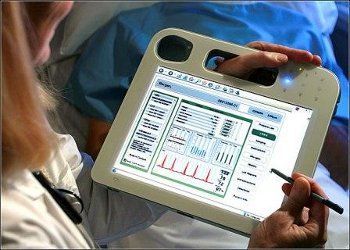Article
HIT Progress in U.S.
Author(s):
Physicians in the U.S. may still be the most skeptical of health care information technology compared to their counterparts worldwide, but there has been great progress in the area.
Physicians in the U.S. may still be the most skeptical of health care information technology compared to their counterparts worldwide, but there has been great progress in the area. According to the U.S. Department of Health and Human Services, the number of hospitals using HIT more than doubled over the last two years.
More than $3 billion in incentive payments has been given to 2,000 hospitals and more than 41,000 physicians to ensure meaningful use of HIT.
“Health IT is the foundation for a truly 21st century health system where we pay for the right care, not just more care,” said HHS Secretary Kathleen Sebelius in a visit to Kansas City, Mo. “Health care professionals and hospitals are taking advantage of this unprecedented opportunity to begin using smarter, new technology that improves care and creates the jobs we need for an economy built to last.”

The American Hospital Association had conducted a survey for HHS, which found that 35% of hospitals had adopted electronic health records in 2011, up from 16% in 2009. By 2015, 85% of hospitals reported they intend to take advantage of payments through EHR incentive programs.
The Centers for Medicare & Medicaid Services provided a total of $519 million in incentive payments in January alone to eligible providers.
All of this focus on HIT means there will be an increase in those jobs over the next few years as more and more hospitals and physicians take advantage of incentive payments. The Bureau of Labor Statistics expects that HIT jobs will increase by 20% from 2008 to 2018. That increase will be much more than the average for all occupational job growth through 2018.
A number of workforce training programs have been launched by the Obama administration to meet the needs for workers in this area.




